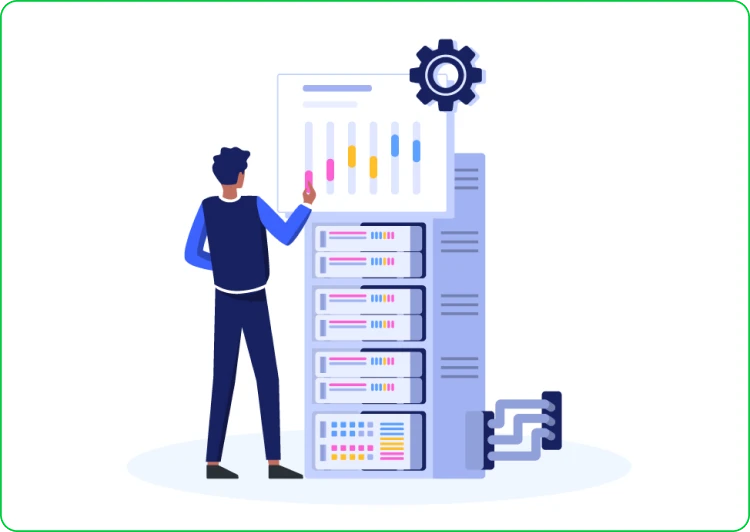 SAAS
SAAS

07 May, 2024

Start-ups should always think about the long term. Likewise, even a small choice, like subscribing to software should be carefully thought out. If you’re befuddling whether to go with SaaS and SaaP, it’s best to know the difference between the two.
So what’s there to know about SaaS Vs SaaP? SaaS refers to subscription-based cloud-based software that is fully controlled by the supplier. On the other hand, SaaP is software installed locally and controlled by the user on their hardware infrastructure after being purchased outright.
But then again, which one’s the best for you? We’ll look closely at the differences between these services, using examples and clear definitions to help you understand them better. Moreover, we’ll help you find your perfect match!
Contents
SaaS stands for “Software as a Service”. It is a cloud-based software solution through which users can buy software services directly from the provider through the Internet. The buyer will not install it on their servers or host computers but rather access it through the internet.
As an alternative, consumers pay a membership fee to access the services online, usually once a month or once a year. By paying the subscription fee, SaaS users access the chat platform on the provider’s cloud.
As a result, they can access the application from any place with an internet connection. Furthermore, they do not need to make upfront investments in equipment or software.

Understanding SaaS gets a whole lot easier when you come across examples that you have already been using. So let’s check them out.
Knowing the features and benefits of Software as a Service (SaaS) will help you decide the best option for your business. So let’s check them out.
Here are the features of SaaS;
Here are the benefits of SaaS;
SaaP stands for “Software as a Product” and is known as the traditional method for service providers. However, while SaaP is similar to SaaS, the delivery process is entirely different. Instead of receiving the service software online, you receive it in a product such as CDs.
Starting from installation, configuration, and maintenance, everything is done from the user side. As a result, infrastructure such as servers are a physical element of SaaP and are required to operate SaaP at an optimal level.
Owning the infrastructure is one of the SaaP disadvantages. Nevertheless, this model provides users with greater control and customization but requires upfront investment in hardware and software licenses.

Here are the examples of SaaP;
Now that you know what is SaaP, let’s delve into its features and benefits. Understanding these will highlight its advantages for businesses, making it easier to see how it can improve operations and productivity.
Here are the features of SaaP;
Here are the benefits of using SaaP;
In comparing SaaS (Software as a Service) and SaaP (Software as a Product), several factors determine the better option for businesses.
SaaS wins in scalability, accessibility, short-term cost-effectiveness, deployment time, and maintenance. It allows for easy scalability, access from anywhere, lower upfront costs, quick deployment, and reduced maintenance responsibilities.
However, when it comes to customization, security, ownership, dependency, and long-term cost savings, SaaP emerges as the winner. SaaP offers more outstanding customization options, stronger security control, full ownership of the software, reduced dependency on external providers, and long-term cost savings.
Nevertheless, here’s a table that lists different factors and the winner in that factor;
| Factor | SaaS | SaaP | Winner |
| Scalability | Easy to scale up resources on-demand with cloud infrastructure | Requires additional investments in hardware for scaling | SaaS |
| Accessibility | Accessible from any location with an internet connection | Physical infrastructure is required | SaaS |
| Short-term Cost-effectiveness | Lower upfront costs, pay-as-you-go model | Higher upfront costs due to hardware and infrastructure investments | SaaS |
| Customization | Limited customization options due to multi-tenant architecture | Offers more extensive customization options | SaaP |
| Security | Data stored on the provider’s secure cloud servers | Data stored locally offers more control over security | SaaP |
| Ownership | Users access services online through a subscription | Users own software licenses outright | SaaP |
| Deployment Time | Quick deployment due to cloud-based infrastructure | Longer deployment time due to installation and setup requirements | SaaS |
| Maintenance | Provider handles maintenance, updates automatically | Users responsible for maintenance and updates | SaaS |
| Dependency | Relies on external providers for updates and maintenance | Less dependency on external providers | SaaP |
| Long-term Cost Saver | Lower long-term costs due to the subscription model | No recurring subscription fees, one-time cost | SaaP |
Both SaaS and SaaP have been performing well in the market and are two excellent viable choices for businesses. However, the right software model for your needs depends on many factors.

The easiest way to determine which is best for you is to look at the table above and make a list of the factors that best fit your requirements. Whichever scores the most is the winner for you, and you can implement it in your system mindlessly.
In general, SaaS could be the optimal option if you require quick scalability, accessibility from anywhere, and lower upfront costs. It’s suitable if you don’t have an existing infrastructure and prioritize ease of deployment and maintenance.
However, if you’re playing a long-term game where you aim to have more control over customization, security, and ownership, SaaP would be the ideal option.”
Overall, the comparison between SaaS vs SaaP is everlasting, and none of them is the winner. It’s your needs that make each of them a winner. If you need scalability, accessibility, short deployment time, and easy maintenance, opt for SaaS.
On the other hand, if you want ownership of the software, data security, customization, and long-term cost savings, then there’s no better option than SaaP. Evaluate your needs first and then decide which one suits you best. So good luck!
Let’s check out some commonly asked questions regarding SaaS vs SaaP.
With SaaS, the provider usually takes care of all the support and troubleshooting. With SaaP, users may have to rely on their own IT team or outside firms for help and maintenance.
When a business wants to switch from SaaS to SaaP, it should consider costs, moving data, integrating with other systems, and educating employees.
Some SaaS companies may offer tools and services to make moving data and connecting to other cloud-based systems easier. On the other hand, SaaP users may have to use manual methods or third-party integrations to move data and connect their systems.